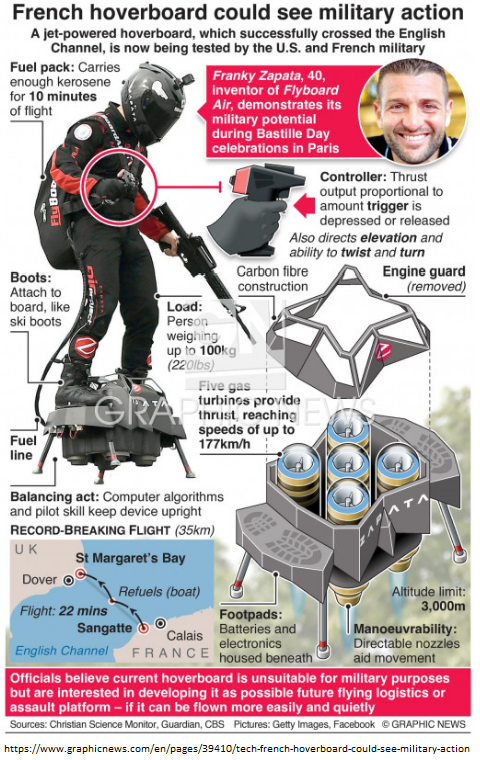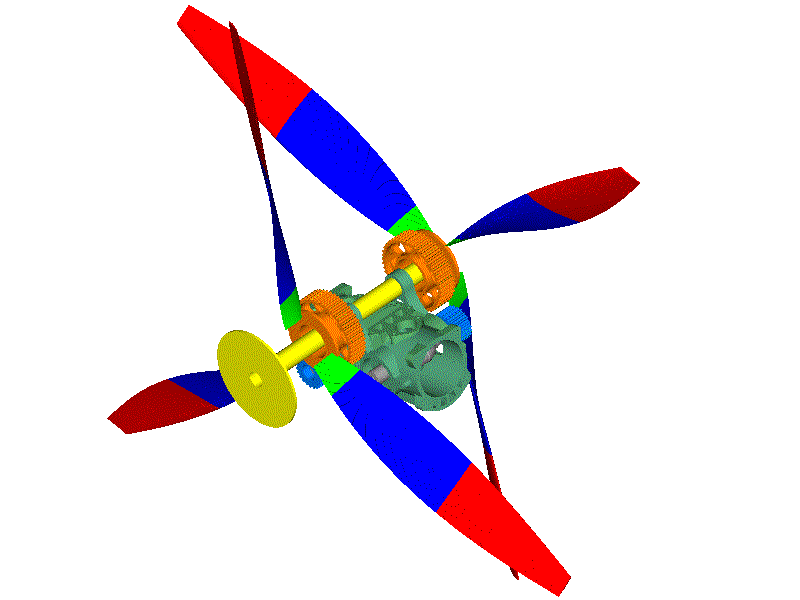I've already written more or less this exact reply to you once before, but lets try again.
manolis wrote: ↑20 Sep 2020, 07:55
By applying a torque (pair of forces) on the Portable Flyer / pilot assembly , it starts rotating about an axis passing from its overall center of gravity, with the rotation axis being parallel to the “vector” of the torque applied.
If you change the direction of the torque, the rotation axis changes direction.
The moment of inertia of the assembly and the applied torque define how quickly the assembly will change direction.
Yes, this is an explanation of how forces and torques act on a rigid object. No one disputes this. We all understand you believe this is the only thing that matters.
manolis wrote: ↑20 Sep 2020, 07:55
When the pilot needs to brake from high speed, he can re-pose his head and legs so that the aerodynamic drag on his head to increase and the aerodynamic drag on his legs to decrease (say, he bends his neck backwards, he also bends his knees so that his feet to go higher).
The pair of forces force the assembly to rotate about a horizontal axis normal to the velocity.
The above aerodynamic torque forces the Portable Flyer (and the pilot) to pitch with the propellers looking more upwards, and continuous to pitch until the propellers look adequately backwards.
Then the pilot reposes his body to cancel out the above aerodynamic torque and completes the transition to hovering.
What is your measured or estimated forces/torques for the airstream deflection by the limbs, and similarly the forces from the knee bending moment? Given these and the mass and inertia of the personal flyer, what is dynamic behaviour of the PF over time?
If you can't do the dynamic stabilty calculations or modelling then if you provide the estimates of these and other values here, perhaps someone else can be bothered. The PDF I posed of the H4 modelleing is a nice introduction and example to what is considered normal for this sort of thing.
Again, stability and controllability is a dynamic question that should not, if one is responsible, just be waved away and every time we bring it up you just revert back to static explanations.
manolis wrote: ↑20 Sep 2020, 07:55
The duration and the distance covered until hovering are as described in the post to
NathanE.
Congratulations, I mean that honestly, these were the first quantititive numbers I have ever seen you post or estimate. Its a good first step!
manolis wrote: ↑20 Sep 2020, 07:55
If the overall gyroscopic rigidity was not tiny, this maneuver would take a lot of time and a lot of effort (like making aerobatics) by the pilot.
To put it differently:
Either with the engines running and the propellers rotating, or with the engines / propellers stall, the pilot wearing the Portable Flyer is like the “wind tunnel dancer” and can change his orientation easily and quickly at any direction.
If you get how easily the direction of the Portable Flyer changes, you got it all.
You are almost there...
- The PF is stable and suitable for beginners (I'll just take your singular example of what matters in a dynamic stability sense - 'was not/ 'is' tiny gyroscopic rigidiy', whatever)
- kind of like pissing of the side of a cruise ship, but for some definitions of the word, dynamically stable. Yay!
- The PF is easily manoverable (huh, but above?, YAY!?)
- Just pop your foot or and into the airstream whip it around for corrections
- Just lift those knees to come to a stop in a couple hundred meters
So, it sounds like the PF is just perfect, because you believe it to have these mutually exclusive properties





Compromises are for worse engineers than you




But, I'm a serious engineer so I'm not just going to ridicule you for believing these things on the basis of animal and baby photos. I know that everything is a compromise.
The way you work out where on the spectrum of stability vs controllabiliy your flyer sits -
and this depends on its state of flight - is to do the dyamic modelling of performing these manouvers and then you can know, when moving from one configuration to another (forward -> backward, backward -> hover, dusturbance -> correction -> hover) what is needed as a control input and what the bounds of what the airframe will do in response.
You almost get this - you say yourself - one of the few things it seems you have recognised as relevant, the gyroscopic rigidy is 'was not / is tiny'. 'Was not / is tiny' is a qualitative description in relation to a control input, like foot waggle in the airstream or a knee bend, and you are using this sentence fragment to assert stability or controllability. Do you know how you move from a 'was not / is tiny' assertion to a true understanding of stability and controllability? You do the modelling, or AT LEAST you run these 'was not / is tiny' thought experiments for many different values of control input (with numbers) and then pretty soon you have learnt something of value of where your PF sits on the spectrum in different flight states.
YOU CAN NOT SAY ANYTHING GENERALISABLE OR SIGNIFIGANT OF VALUE ABOUT THE DYNAMIC STABILITY OR CONTROLABILITY OF AN AERODYNAMIC BODY IN FLIGHT ON THE BASIS OF SIMPLE STATIC HAND WAVING OR BY COMPARISON WITH OTHER AIRCRAFT (ROSSY) WITH DIFFERENT PROPERTIES (OR BIRDS OR BABIES).
This is literally my point. I used to see undergraduate students that would assert that their widget was stable and controllable without needing to do the useless maths and modelling. Those students did not become good aircraft or control engineers.



